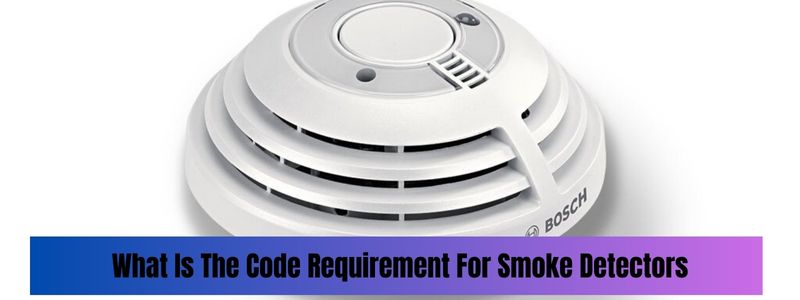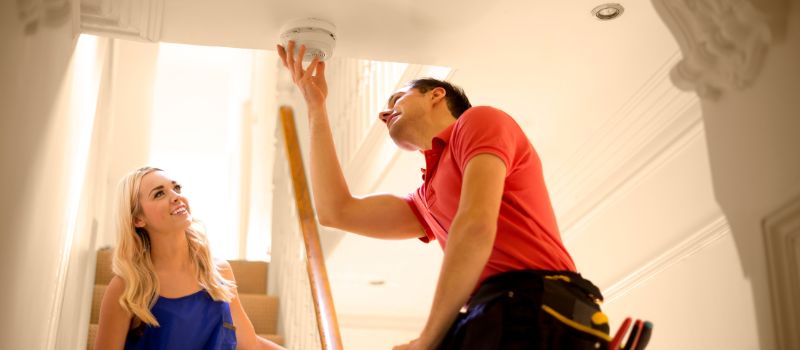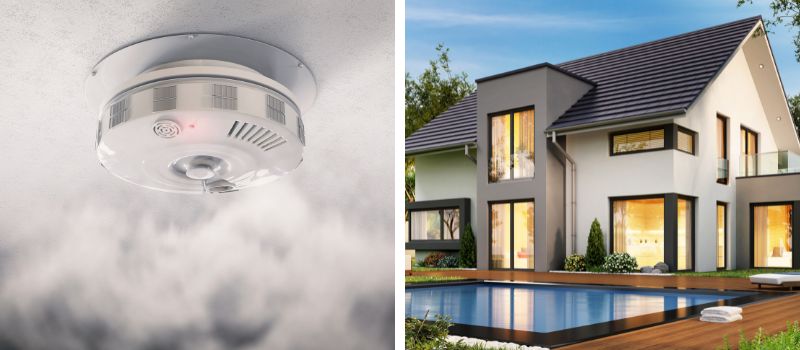When it comes to safeguarding your home or business from the threat of fire, proper heat detector placement is crucial. Ensuring that these life-saving devices are installed in the right locations can significantly reduce the risk of property damage, injury, or even death.
In this comprehensive guide, we’ll cover the essential factors to consider when determining where to place heat detectors in various settings.
Where Should Heat Detector Be Located?
A heat detector should be located in a position free from interference, such as away from vents or air ducts. Ensure the sensor’s vents are unobstructed and easily accessible. For optimal performance, install the detector at an elevated position, either high up on a wall or on the ceiling.
Optimal Heat Detector Placement: Key Factors
- Room Size and Layout: Take into account the size and layout of the room or space when determining the best location for heat detectors. Larger rooms or spaces with high ceilings may require multiple detectors for adequate coverage.
- Heat Source Proximity: It’s essential to place heat detectors close enough to potential heat sources (e.g., appliances, electrical equipment) but far enough away to avoid false alarms caused by normal temperature fluctuations.
- Detector Type: There are two primary types of heat detectors – fixed temperature and rate-of-rise. Fixed temperature detectors respond when a predetermined temperature is reached, while rate-of-rise detectors respond to rapid increases in temperature. Consider which type is best suited for the area in question.
- Building Codes and Standards: Be sure to adhere to local building codes and standards when installing heat detectors, as these regulations are in place to ensure safety and efficiency.
Residential Heat Detector Placement
In a residential setting, heat detectors should generally be located in the following areas:
- Kitchen: Install detectors at least 10 feet away from cooking appliances to reduce false alarms. Place them on the ceiling or high on the wall, but not directly above the stove or oven.
- Garage: A heat detector should be installed in a garage, particularly if flammable materials are stored there. Position it on the ceiling or high on a wall near the center of the space.
- Attic: Heat detectors are recommended for attics, especially if they contain electrical equipment or combustible materials. Place the device near the center of the space, on the ceiling or high on a wall.
- Utility Rooms: Install heat detectors in utility rooms containing furnaces, water heaters, or other heat-producing appliances. Position the detector on the ceiling or high on a wall near the center of the room.
- Laundry Room: Place a heat detector in laundry rooms, especially if they contain heat-producing appliances like dryers. Install the device on the ceiling or high on a wall near the center of the space.
Commercial Heat Detector Placement
In commercial settings, heat detectors should be placed in areas with a higher risk of fire or heat-related incidents. Some common locations include:
- Kitchens: Install detectors in commercial kitchens, ensuring they are at least 10 feet away from cooking appliances. Place them on the ceiling or high on the wall, but not directly above the stove or oven.
- Boiler and Furnace Rooms: Position heat detectors near boilers or furnaces, as these are common sources of heat-related incidents. Install the device on the ceiling or high on a wall near the center of the room.
- Storage Areas: Install heat detectors in storage areas containing flammable materials or combustibles. Place the device on the ceiling or high on a wall near the center of the space.
- Electrical Rooms: Position detectors in electrical rooms, as electrical equipment can pose a fire hazard. Install the device on the ceiling or high on a wall near the center of the room.
- Manufacturing and Industrial Areas: Place heat detectors in areas where high temperatures or heat-producing processes are common, such as manufacturing or industrial settings. Install the device on the ceiling or high on a wall near the center of the space.
Key Takeaways
- The proper placement of heat detectors is essential for ensuring safety and efficiency in both residential and commercial settings.
- Consider factors such as room size, layout, heat source proximity, detector type, and building codes when determining where to install heat detectors.
- In residential settings, prioritize areas like kitchens, garages, attics, utility rooms, and laundry rooms.
- In commercial settings, focus on locations with a higher risk of fire, such as kitchens, boiler and furnace rooms, storage areas, electrical rooms, and manufacturing or industrial areas.
Relevant FAQs
How many heat detectors do I need in a room or space?
The number of heat detectors required depends on factors such as room size, layout, and heat sources. Larger rooms or those with high ceilings may require multiple detectors for adequate coverage. Always consult local building codes and standards for specific requirements.
Can I use a heat detector in a bedroom instead of a smoke detector?
Smoke detectors are generally recommended for bedrooms because they can detect smoke and fire at an earlier stage than heat detectors. Heat detectors may not provide the same level of protection in bedrooms and should be used in conjunction with smoke detectors.
Can heat detectors be placed on walls instead of ceilings?
Heat detectors can be installed on walls if ceilings are not suitable, but they should be placed as high as possible, typically within 6-12 inches from the ceiling. This ensures the detector can effectively sense heat rising from a fire.
Do heat detectors require regular maintenance?
Yes, heat detectors should be tested and maintained regularly to ensure proper functioning. Consult the manufacturer’s guidelines for specific maintenance recommendations.
Is it possible to connect heat detectors to a central monitoring system?
Many heat detectors can be connected to a central monitoring system, which can provide an additional layer of protection and early warning in case of fire. Consult the manufacturer’s documentation to confirm compatibility with your specific heat detector model.
Read more:
- How To Cover Smoke Detector In Hotel?
- How To Tell If Your Smoke Detector Is A Hidden Camera?
- Where To Install Smoke detector In Bedroom With Ceiling Fan?

Edward’s expertise in smoke detectors is particularly noteworthy. He has conducted extensive research on the latest advancements in smoke detector technology and has worked closely with manufacturers to develop cutting-edge products that can detect fires more accurately and quickly.




